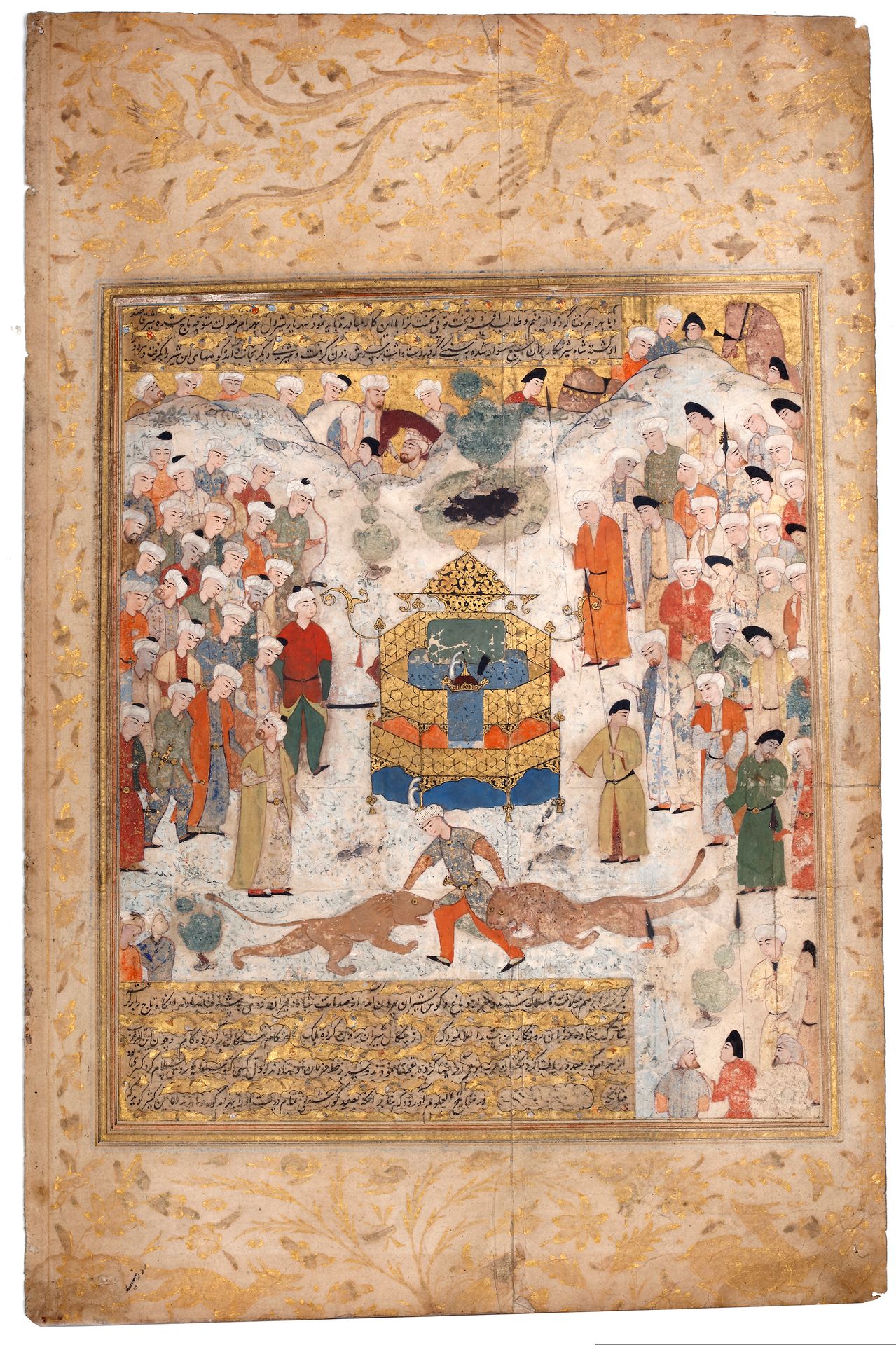Description
BAHRAM GUR PROVES HIS RIGHT TO THE THRONE OF IRAN SAFAVID SHIRAZ, LAST QUARTER 16TH CENTURY
The scene in this miniature painting depicts the Sasanian king Bahram Gur (420-438 AD) who was a dominant figure in Persian history and was celebrated in literature and visual arts as a prowess hunter and lover. Bahram Gur was celebrated throughout history for his military conquests against the Romans, Hephthalites, Indians and Africans. In this work he is shown standing between two lions that attack his legs from either side and with the power of his bare hands he is able to subdue the mighty beasts. Behind him is a large elaborate hexagonal throne made of two tiers of gold-work and a gold canopy. Resting on the seat of the throne is the king’s crown. Surrounding the scene on both edges and at the top are large groups of on-looking courtiers and servants dressed in bright silk tunics and white turbans or black hats. Some of the crowd are armed with spears and bows. The scene is set against a rocky backdrop with cliff edges at the top, and behind a camel train of travelling merchants peer in to the action. The top right corner shows the camels that lead the pack, with their black and gold trappings, who also look on in awe at the king. The earthen coloured backdrop has been dotted with various pruned green shrubs suggestive of a royal garden or earthly paradise. Elegantly written lines of calligraphic nastaliq script border the image, with two at the top and four at the bottom, each written inside white clouds and presented on a gold background. The written word and visual allegory work harmoniously to create this wonderful work of art. The reverse of the image contains further lines of nastaliq script, which are divided in four columns and written diagonally between cartouches with polychrome and gold illumination. The overall work leaves no surface unadorned and stunningly expresses the variety of techniques employable by the artist to create a visually rich composite work of art. It exalts the variety of various motifs, compositions, techniques and styles known to the artist and patron, while simultaneously suggesting the wealth of its owner through the vast amounts of gold present and the time employed to complete such a work. CATALOGUE NOTE Several versions of this scene exist from Persian manuscripts in museum collections, including the Philadelphia Museum of Art, Walters Art Museum and Manchester University Library. The most similar to ours however can be found in the Museum of Fine Arts in Boston.
24
BAHRAM GUR PROVES HIS RIGHT TO THE THRONE OF IRAN SAFAVID SHIRAZ, LAST QUARTER 16TH CENTURY
